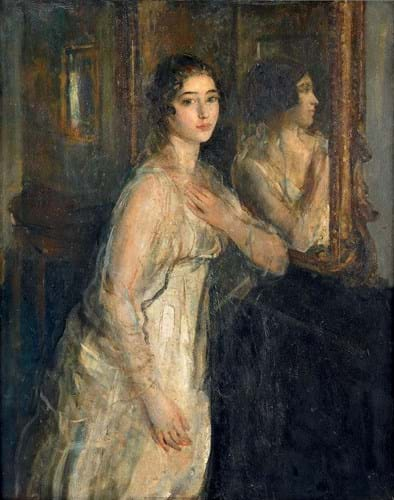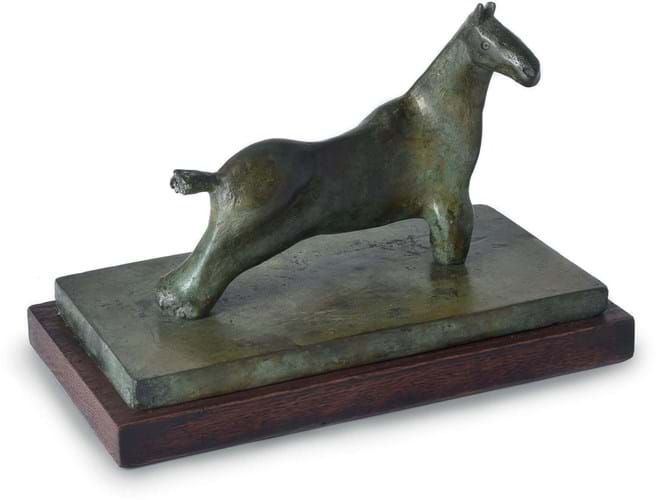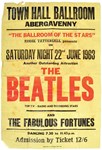Critics were not always kind to the British ‘society’ artist Ambrose McEvoy (1878-1927).
One wag writing during the First World War joked that at a time of sugar shortage McEvoy’s sometimes saccharine portraits were ‘a positive asset to the nation’.
Despite such swipes, his portraits remained in high demand throughout the ‘Roaring Twenties’ with sitters including illuminaries such as Winston Churchill and James Ramsay MacDonald.
When McEvoy died in 1927, he was at the peak of his fame.
The market for his works since his death has had its ups and downs. His portraits were deemed somewhat ‘of their period’ and fell out of fashion as tastes changed after the Second World War.
Although he remained in relative obscurity in subsequent decades, his name has re-emerged more recently both in terms of his portraits making increasing sums at auctions and dealers spotting and cultivating the growing interest.
A significant moment came in February 2015 when a portrait of a young girl appeared at Dreweatts in Newbury and soared over a £700- 1000 estimate to be knocked down at £32,000. The subject was later identified as the aristocratic British actress and ‘Bright Young Thing’ Lois Sturt (1900-37).
It subsequently featured at the first major show on McEvoy in 50 years which was staged by dealer Philip Mould at his Pall Mall gallery, opening last November.
McEvoy returns to Dreweatts
In the latest test of demand, another early-20th century portrait by McEvoy resurfaced, again at Dreweatts (25% buyer’s premium), and was offered at its Modern and Contemporary Art sale on March 19.
The 4ft 2in x 3ft 4in (1.27 x 1.01m) oil on canvas portrait of Miss Violet Henry (1901-76) was painted in 1918 and had been in the family of the sitter ever since then.
The sitter was a typical McEvoy client. She was the daughter of Philip Solomon Henry (1863-1933), an Australian copper and coffee trader who later lived first in Paddington and then on a large estate in Asheville, North Carolina.
After marrying Brigadier Hartley Alfred Macochie, she lived in Somerset and McEvoy painted her standing at a mantelpiece, her reflection appearing in a mirror – a composition borrowed from Whistler’s Symphony in White (1864).
The picture had a long exhibition history. It was commissioned as part of a series of portraits McEvoy painted to benefit the Red Cross that were shown at the Grosvenor Gallery in 1918. Two years later it formed part of the McEvoy exhibition held by the famed dealer Joseph Duveen in New York, a show that gave the artist a reputation in the US. It was also pictured in John Rothenstein’s Modern English Painters: Sickert to Smith (1952) and so it was a ‘known’ work.
Offered for sale in Berkshire with modest expectations of £4000-6000, the appealing subject and fluid technique found admirers.
It sold to a UK trade buyer using thesaleroom.com at £35,000 – a record price for McEvoy at auction.
Indeed, the price suggested extra interest has been encouraged by the Mould exhibition as well as the fact that the artist’s following was not, at this point at any rate, deterred from bidding by the coronavirus crisis unravelling with greater urgency at the time of this sale.
Leading Lavery
The top lot of the Dreweatts sale was a view of Hyde Park Corner by Sir John Lavery (1856-1941) showing the procession for the marriage of Prince George, Duke of Kent, to Princess Marina of Greece and Denmark on November 29, 1934.
Lavery was the artistic equivalent of David Dimbleby in his day – wheeled out with steady regularity to cover royal weddings and key national moments in all their vibrant pomp. In the 1880s he was commissioned to paint the state visit of Queen Victoria to the Glasgow International Exhibition and this royal patronage continued throughout the rest of his career.
He was wheeled out with steady regularity to cover royal weddings and key national moments in all their vibrant pomp. In the 1880s he was commissioned to paint the state visit of Queen Victoria to the Glasgow International Exhibition and this royal patronage continued throughout the rest of his career.
The 23¾ x 19½in (60.5 x 50cm) oil on canvas at Dreweatts came fresh to the market, having been in a private collection for some considerable time. It followed a larger view of Hyde Park Corner but from a different angle showing Armistice Day in November 1918 that sold at Sotheby’s in November 2018 for £250,000 including premium.
This view had a lot going for it too in terms of its market freshness, exhibition history and tonal effects. It duly sold over its £20,000-30,000 estimate and was knocked down at £44,000 to the UK trade.
Moore bronze
Among the sculptures at Dreweatts, a small bronze of a horse by Henry Moore (British 1898-1986) sold within estimate at £26,000 and was knocked down to a UK private buyer.
Conceived in 1978 and cast in an edition of seven, it was a relatively late work and had a green patina with a smooth, undulating surface.
While equine subjects are not unknown in Moore’s oeuvre – they started appearing as early as the 1920s – he did not experiment with the form in the same way that other leading Modern British artists such as Elizabeth Frink did, for example.
The work at Dreweatts was one of only a handful actually created by Moore that were also enlarged to a full-scale model. One of the full-size versions can be found in the collection of the Henry Moore Foundation in the Hertfordshire countryside.
While examples of the larger edition in a brown patina can make substantially more, this 8¼in (21cm) long maquette nevertheless looked a decent proposition against a £20,000-30,000 estimate.
‘Exceptionally pleased’
Dreweatts head of fine art Jennie Fisher said: “Given the potentially difficult timing of this sale, we are exceptionally pleased with the results.
“There were some great prices for the top lots with strong and competitive bidding from trade and private buyers alike. While it may have been difficult for bidders to attend the auction in person, they fully embraced the full range of remote options open to them.”

















